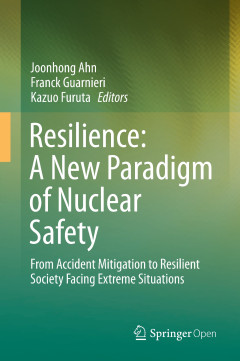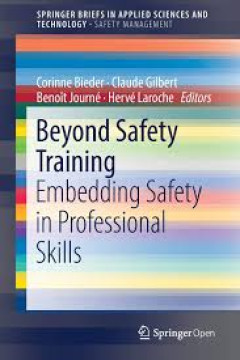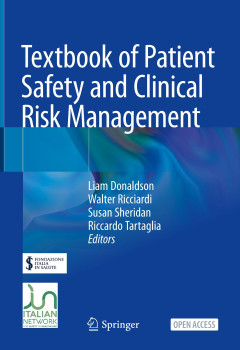Ditapis dengan

Risk Communication for the Future :Towards Smart Risk Governance and Safety M…
The conventional approach to risk communication, based on a centralized and controlled model, has led to blatant failures in the management of recent safety related events. In parallel, several cases have proved that actors not thought of as risk governance or safety management contributors may play a positive role regarding safety. Building on these two observations and bridging the gap betwee…
- Edisi
- -
- ISBN/ISSN
- 9783319740980
- Deskripsi Fisik
- -
- Judul Seri
- -
- No. Panggil
- 363.1 BOU t

Safety cultures, safety models :taking stock and moving forward
The objective of this book is to help at-risk organizations to decipher the “safety cloud”, and to position themselves in terms of operational decisions and improvement strategies in safety, considering the path already travelled, their context, objectives and constraints. What link can be established between safety culture and safety models in order to increase safety within companies carr…
- Edisi
- -
- ISBN/ISSN
- 9783319951294
- Deskripsi Fisik
- viii, 166p. : ill.
- Judul Seri
- -
- No. Panggil
- 363.11 SAF s

Resilience :a new paradigm of nuclear safety : from accident mitigation to re…
This book summarizes presentations and discussions from the two-day international workshop held at UC Berkeley in March 2015, and derives questions to be addressed in multi-disciplinary research toward a new paradigm of nuclear safety. The consequences of the Fukushima Daiichi nuclear accident in March 2011 have fuelled the debate on nuclear safety: while there were no casualties due to radiati…
- Edisi
- -
- ISBN/ISSN
- 9783319587684
- Deskripsi Fisik
- xvii, 356p. : ill.
- Judul Seri
- -
- No. Panggil
- 621.4835 RES r

Beyond safety training
This book investigates why, despite more and more resources devoted to safety training, expectations are not entirely met, particularly in the industrial sectors that have already achieved a high safety level. It not only reflects the most precious viewpoints of experts from different disciplines, different countries, with experiences in various industrial fields at the cutting edge of theories…
- Edisi
- -
- ISBN/ISSN
- 9783319655260
- Deskripsi Fisik
- pages cm
- Judul Seri
- -
- No. Panggil
- 363.11 BIE b

Textbook of patient safety and clinical risk management
Implementing safety practices in healthcare saves lives and improves the quality of care: it is therefore vital to apply good clinical practices, such as the WHO surgical checklist, to adopt the most appropriate measures for the prevention of assistance-related risks, and to identify the potential ones using tools such as reporting & learning systems. The culture of safety in the care enviro…
- Edisi
- -
- ISBN/ISSN
- 9783030594039
- Deskripsi Fisik
- xiii, 496p. : ill.
- Judul Seri
- -
- No. Panggil
- 616 TEX t

The coupling of safety and security :exploring interrelations in theory and p…
This open access book explores the synergies and tensions between safety and security management from a variety of perspectives and by combining input from numerous disciplines. It defines the concepts of safety and security, and discusses the methodological, organizational and institutional implications that accompany approaching them as separate entities and combining them, respectively. T…
- Edisi
- -
- ISBN/ISSN
- 9783030472290
- Deskripsi Fisik
- viii, 113p. : ill.
- Judul Seri
- -
- No. Panggil
- 363.11 COU c
 Karya Umum
Karya Umum  Filsafat
Filsafat  Agama
Agama  Ilmu-ilmu Sosial
Ilmu-ilmu Sosial  Bahasa
Bahasa  Ilmu-ilmu Murni
Ilmu-ilmu Murni  Ilmu-ilmu Terapan
Ilmu-ilmu Terapan  Kesenian, Hiburan, dan Olahraga
Kesenian, Hiburan, dan Olahraga  Kesusastraan
Kesusastraan  Geografi dan Sejarah
Geografi dan Sejarah